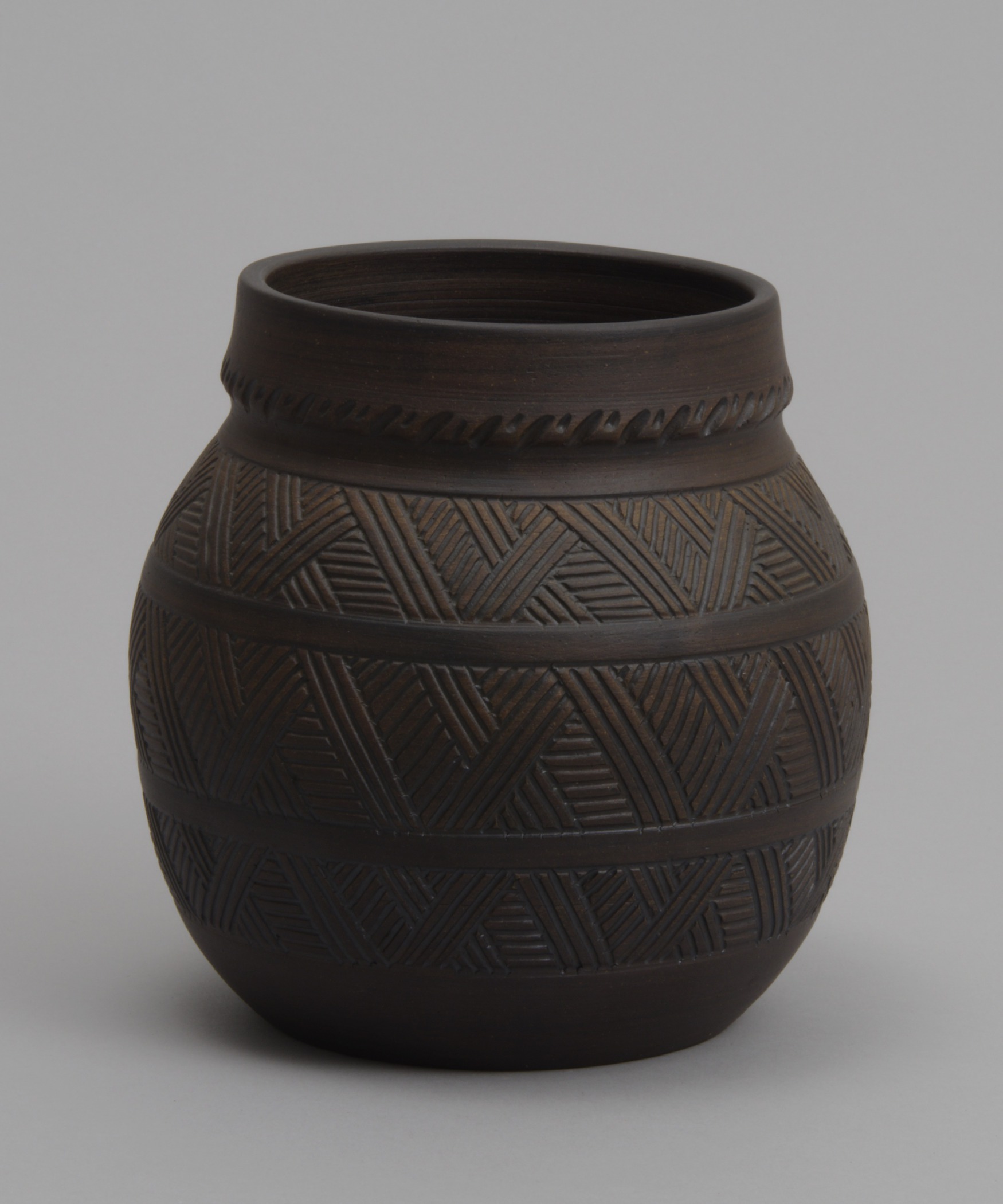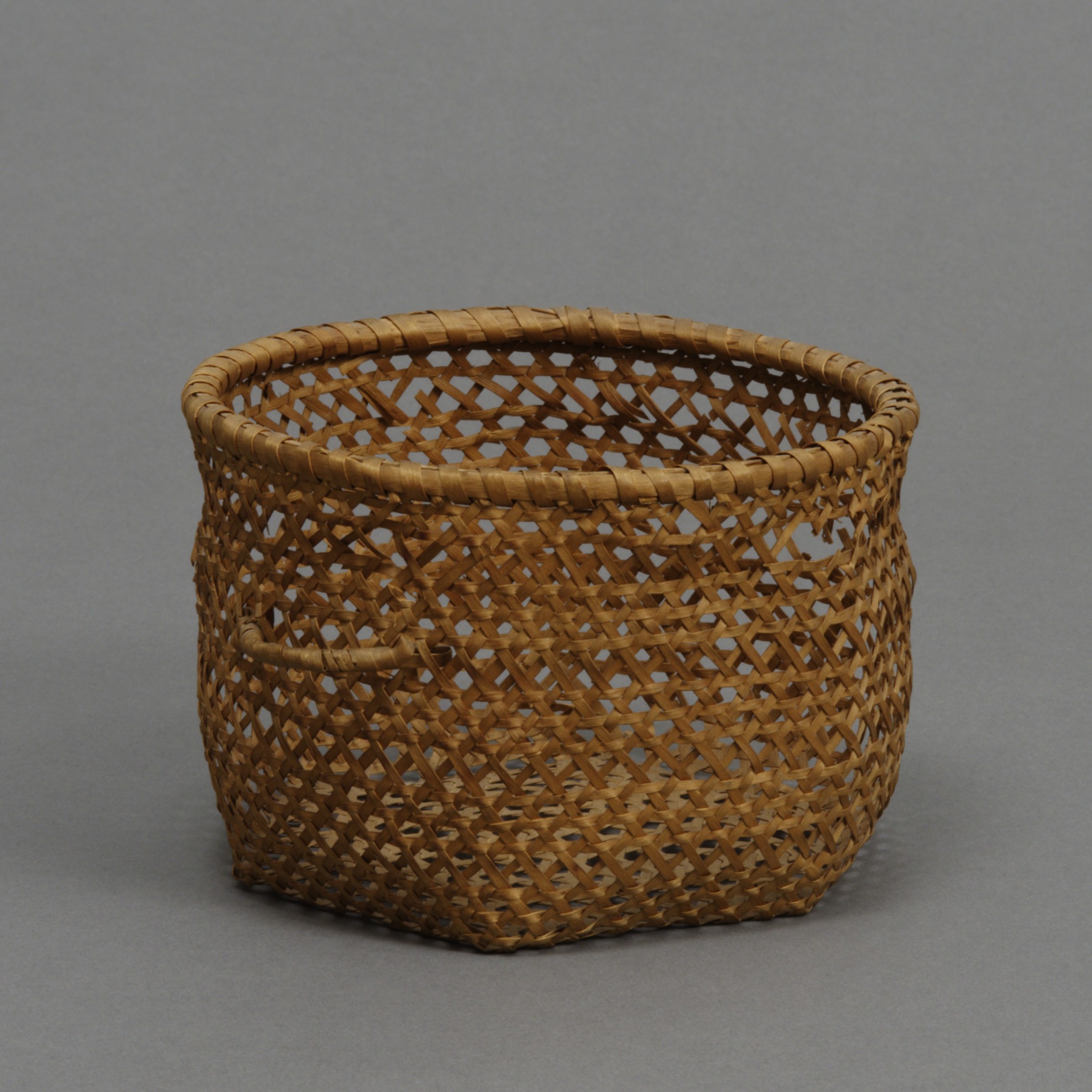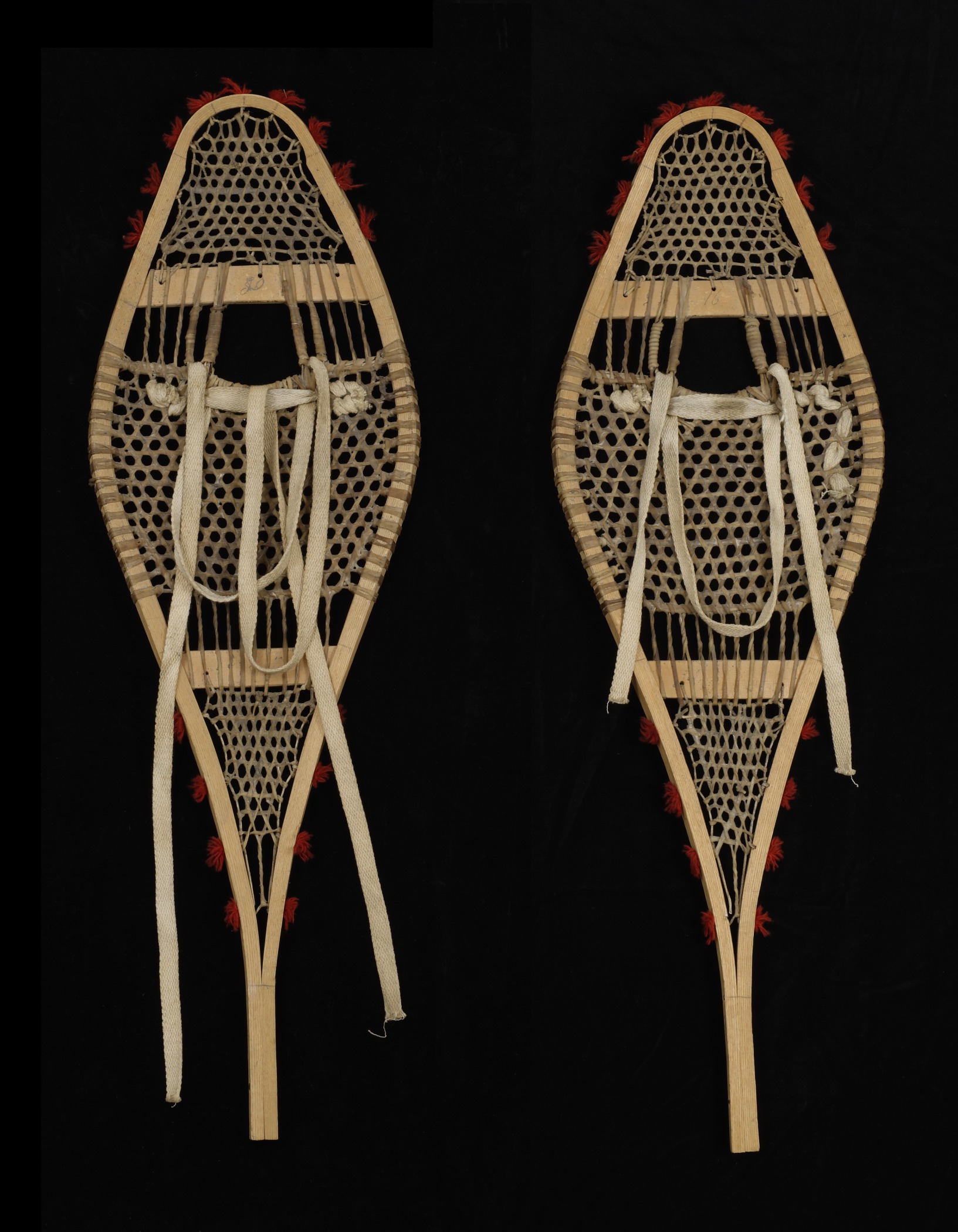Elda “Bun” Muriel Smith (Mrs. Oliver Smith), Canadian (Mohawk [Haudenosaunee, Iroquois]), 1919–1976; Six Nations Kanyengeh Pottery
Jar
- About 1968
- Stoneware
- 6 3/16 × 6 5/16 in.
Hood Museum of Art, Dartmouth College: Gift of Professor Alfred Frank Whiting; 169.9.21354
visibilityLook & DiscussFor thousands of years, objects made of clay, stone, wood, and bone were the “hardware” of day-to-day life for people all over the world. Pottery, vessels made of fire-hardened clay, was used for everything from cooking to storage. In the Northeast Woodlands, pots had slightly pointed, and later, globe-shaped bottoms. For cooking, these pots were suspended over or placed directly into the fire, propped up with rocks. For storage, pots with rounded bottoms were designed to remain upright when placed in a hollow on uneven ground.
explore the object
Traditionally, Haudenosaunee potters were women. They dug natural clay from riverbanks and lake beds; added crushed shell, sand, or plant material to strengthen the clay during firing; and kneaded out the air pockets. They started each pot by pinching a small ball of clay into a dish shape, then added coils of clay, spiraling upward. They pinched or pressed the coils to smooth them together. Once the desired shape was achieved, they fired each pot in an open pit, which probably reached temperatures of about 1,500° F. After firing, the pottery pieces were hard and durable.
Pottery making connected women to the earth and to each other as they collected and prepared materials and passed on their skills from one generation to the next. Haudenosaunee potters formed beautiful rounded shapes and often decorated just the rim of the vessel. They made designs by incising lines into the soft clay with tools made of bone, antler, or sticks. Sometimes the potter used her own fingernails.
Elda “Bun” Muriel Smith looked to ancient Mohawk pottery for the essential method, shape, and color of her jar. She collected local clay from her home on the Six Nations Reserve. She used a fire pit, rather than an electric kiln. She incised traditional patterns into the surface of the soft clay. However, in this jar, she also added her own touches. Rather than just decorating the rim, she created three bands of diagonal, overlapping lines across the belly of the pot, a pattern reminiscent of basket weaving. She contrasted this linear pattern with a wave pattern around the rim.
meet the artist
Mohawk women had been making pottery for 3,000 years before the arrival of Europeans. Post-contact, they began using the metal pots, pans, cups, and dishes that Europeans brought with them. As a result, traditional pottery skills and practices were lost.
In the middle of the 20th century, Mohawk pottery-making practice was revived, in large part due to the efforts of Elda “Bun” Smith, a Mohawk woman living on the Six Nations Reserve. Elda was curious about the pieces of broken pottery she found in the ground throughout the reserve, and began researching the history of Mohawk pottery. With the help of a visiting artist, she learned how to make pots out of clay. Over time, she evolved a method and style that revived, in large part, the methods of her ancestors. Her work and the work of other potters on the Six Nations Reserve came to be known as Mohawk Pottery. In 1967, Smith created a stunning tea set for Queen Elizabeth II on her visit to Canada. Although Mohawk Pottery ceased as a workshop in the 1970s, many of the potters continued to work and pass their knowledge onto their children. Elda’s son, daughter-in-law, and granddaughter all went on to become successful potters.




